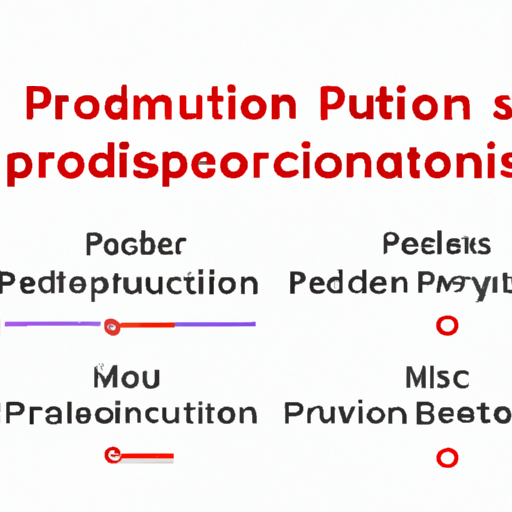What are the Other 5 Common Production Processes?
Introduction
In the world of manufacturing and production, understanding the various production processes is crucial for businesses aiming to optimize efficiency, reduce costs, and meet customer demands. Production processes refer to the methods and techniques used to transform raw materials into finished goods. Each process has its unique characteristics, advantages, and disadvantages, making it essential for companies to choose the right one based on their specific needs. This article will explore five common production processes: Job Shop Production, Batch Production, Mass Production, Continuous Production, and Project-Based Production. By examining each method, we aim to provide insights into their applications and implications for various industries.
1. Job Shop Production
Definition and Characteristics
Job shop production is a manufacturing process characterized by the production of small quantities of customized products. This method is highly flexible, allowing for a wide variety of products to be made in small batches. Job shops typically have specialized equipment and skilled labor, enabling them to handle complex tasks and unique customer specifications.
Typical Industries and Applications
Job shop production is commonly found in industries such as custom furniture manufacturing, machine shops, and specialized printing services. These industries often require tailored solutions that mass production cannot provide.
Advantages and Disadvantages
**Advantages:**
- High flexibility to accommodate custom orders.
- Ability to produce a wide range of products.
- Skilled labor can lead to high-quality outputs.
**Disadvantages:**
- Higher production costs due to low volume.
- Longer lead times for production.
- Complexity in scheduling and managing resources.
Examples of Job Shop Production in Practice
A classic example of job shop production is a custom furniture maker that designs and builds unique pieces based on individual customer specifications. Each project may require different materials, designs, and techniques, showcasing the flexibility and craftsmanship inherent in job shop production.
2. Batch Production
Definition and Characteristics
Batch production involves producing goods in groups or batches rather than in a continuous stream. This method allows for a moderate level of customization while still benefiting from some economies of scale. Batch production is often used when demand for a product is not consistent enough to justify mass production.
Differences Between Batch and Job Shop Production
While both methods allow for some level of customization, batch production typically involves larger quantities of a single product type, whereas job shop production focuses on smaller, more varied orders.
Common Industries Utilizing Batch Production
Industries such as food processing, clothing manufacturing, and electronics often employ batch production. For instance, a bakery may produce a batch of cookies, followed by a batch of cakes, allowing for variety while maintaining efficiency.
Advantages and Disadvantages
**Advantages:**
- More efficient than job shop production for moderate volumes.
- Flexibility to switch between different products.
- Reduced setup times compared to job shop production.
**Disadvantages:**
- Still higher costs than mass production.
- Potential for excess inventory if demand fluctuates.
- Complexity in managing production schedules.
Real-World Examples of Batch Production
A notable example of batch production is a clothing manufacturer that produces seasonal collections. The company may create a batch of summer dresses, followed by a batch of winter coats, allowing them to respond to changing fashion trends while maintaining production efficiency.
3. Mass Production
Definition and Characteristics
Mass production is a manufacturing process that involves producing large quantities of standardized products, often using assembly line techniques. This method is designed for high efficiency and low unit costs, making it ideal for products with consistent demand.
Historical Context and Evolution
Mass production gained prominence during the Industrial Revolution, particularly with the introduction of assembly lines by Henry Ford in the early 20th century. This innovation revolutionized manufacturing by significantly reducing production times and costs.
Industries That Rely on Mass Production
Mass production is prevalent in industries such as automotive manufacturing, consumer electronics, and household goods. Companies like Ford, Apple, and Procter & Gamble utilize mass production techniques to meet high consumer demand.
Advantages and Disadvantages
**Advantages:**
- Economies of scale lead to lower production costs.
- High efficiency and speed of production.
- Consistent product quality due to standardized processes.
**Disadvantages:**
- Limited flexibility to customize products.
- High initial setup costs for production lines.
- Vulnerability to market fluctuations and changes in consumer preferences.
Case Studies of Successful Mass Production Systems
Ford's Model T assembly line is a prime example of successful mass production. By streamlining the manufacturing process, Ford was able to produce cars at an unprecedented rate, making automobiles accessible to the general public.
4. Continuous Production
Definition and Characteristics
Continuous production is a method where the production process runs continuously, often 24/7, to produce large volumes of a single product. This method is typically used for commodities and products that have a constant demand.
Comparison with Other Production Processes
Unlike batch or job shop production, continuous production does not involve stopping the production line for changeovers or adjustments. This leads to higher efficiency but less flexibility.
Industries That Typically Use Continuous Production
Industries such as oil refining, chemical manufacturing, and paper production commonly utilize continuous production methods. These industries require consistent output and often deal with perishable or time-sensitive materials.
Advantages and Disadvantages
**Advantages:**
- Extremely high efficiency and low production costs.
- Consistent product quality due to continuous processes.
- Reduced labor costs as fewer workers are needed for supervision.
**Disadvantages:**
- High initial investment in equipment and infrastructure.
- Limited flexibility to change products quickly.
- Risk of significant losses if production needs to be halted.
Examples of Continuous Production in Action
An example of continuous production is an oil refinery, which operates around the clock to convert crude oil into gasoline and other products. The continuous nature of the process allows for maximum output and efficiency.
5. Project-Based Production
Definition and Characteristics
Project-based production is a method used for unique, one-time projects that require a specific set of resources and timeframes. This approach is common in industries where the end product is not mass-produced and often involves significant planning and coordination.
Differences from Other Production Processes
Project-based production differs from other methods in that it is not focused on repetitive tasks or standardized outputs. Each project is unique, requiring tailored resources and management strategies.
Industries and Scenarios Where Project-Based Production is Common
Industries such as construction, film production, and software development often utilize project-based production. For example, building a bridge or producing a movie involves distinct phases and resources tailored to the specific project.
Advantages and Disadvantages
**Advantages:**
- High level of customization and flexibility.
- Ability to manage complex projects with specific requirements.
- Potential for high profitability on successful projects.
**Disadvantages:**
- Uncertainty in project timelines and costs.
- Resource allocation can be challenging.
- Risk of project failure if not managed effectively.
Notable Examples of Project-Based Production
A notable example of project-based production is the construction of a skyscraper. Each project involves unique designs, materials, and timelines, requiring careful planning and execution to meet the client's specifications.
Conclusion
In summary, understanding the various production processes—Job Shop Production, Batch Production, Mass Production, Continuous Production, and Project-Based Production—is essential for businesses looking to optimize their manufacturing strategies. Each method has its unique characteristics, advantages, and disadvantages, making it crucial for companies to select the right process based on their specific needs and market demands. As industries continue to evolve, staying informed about future trends in production processes will be vital for maintaining competitiveness and meeting customer expectations.
References
- "Manufacturing Processes for Engineering Materials" by Serope Kalpakjian and Steven R. Schmid.
- "Operations Management" by William J. Stevenson.
- "Production and Operations Management" by Jay Heizer and Barry Render.
- Industry reports and case studies from relevant manufacturing sectors.
What are the Other 5 Common Production Processes?
Introduction
In the world of manufacturing and production, understanding the various production processes is crucial for businesses aiming to optimize efficiency, reduce costs, and meet customer demands. Production processes refer to the methods and techniques used to transform raw materials into finished goods. Each process has its unique characteristics, advantages, and disadvantages, making it essential for companies to choose the right one based on their specific needs. This article will explore five common production processes: Job Shop Production, Batch Production, Mass Production, Continuous Production, and Project-Based Production. By examining each method, we aim to provide insights into their applications and implications for various industries.
1. Job Shop Production
Definition and Characteristics
Job shop production is a manufacturing process characterized by the production of small quantities of customized products. This method is highly flexible, allowing for a wide variety of products to be made in small batches. Job shops typically have specialized equipment and skilled labor, enabling them to handle complex tasks and unique customer specifications.
Typical Industries and Applications
Job shop production is commonly found in industries such as custom furniture manufacturing, machine shops, and specialized printing services. These industries often require tailored solutions that mass production cannot provide.
Advantages and Disadvantages
**Advantages:**
- High flexibility to accommodate custom orders.
- Ability to produce a wide range of products.
- Skilled labor can lead to high-quality outputs.
**Disadvantages:**
- Higher production costs due to low volume.
- Longer lead times for production.
- Complexity in scheduling and managing resources.
Examples of Job Shop Production in Practice
A classic example of job shop production is a custom furniture maker that designs and builds unique pieces based on individual customer specifications. Each project may require different materials, designs, and techniques, showcasing the flexibility and craftsmanship inherent in job shop production.
2. Batch Production
Definition and Characteristics
Batch production involves producing goods in groups or batches rather than in a continuous stream. This method allows for a moderate level of customization while still benefiting from some economies of scale. Batch production is often used when demand for a product is not consistent enough to justify mass production.
Differences Between Batch and Job Shop Production
While both methods allow for some level of customization, batch production typically involves larger quantities of a single product type, whereas job shop production focuses on smaller, more varied orders.
Common Industries Utilizing Batch Production
Industries such as food processing, clothing manufacturing, and electronics often employ batch production. For instance, a bakery may produce a batch of cookies, followed by a batch of cakes, allowing for variety while maintaining efficiency.
Advantages and Disadvantages
**Advantages:**
- More efficient than job shop production for moderate volumes.
- Flexibility to switch between different products.
- Reduced setup times compared to job shop production.
**Disadvantages:**
- Still higher costs than mass production.
- Potential for excess inventory if demand fluctuates.
- Complexity in managing production schedules.
Real-World Examples of Batch Production
A notable example of batch production is a clothing manufacturer that produces seasonal collections. The company may create a batch of summer dresses, followed by a batch of winter coats, allowing them to respond to changing fashion trends while maintaining production efficiency.
3. Mass Production
Definition and Characteristics
Mass production is a manufacturing process that involves producing large quantities of standardized products, often using assembly line techniques. This method is designed for high efficiency and low unit costs, making it ideal for products with consistent demand.
Historical Context and Evolution
Mass production gained prominence during the Industrial Revolution, particularly with the introduction of assembly lines by Henry Ford in the early 20th century. This innovation revolutionized manufacturing by significantly reducing production times and costs.
Industries That Rely on Mass Production
Mass production is prevalent in industries such as automotive manufacturing, consumer electronics, and household goods. Companies like Ford, Apple, and Procter & Gamble utilize mass production techniques to meet high consumer demand.
Advantages and Disadvantages
**Advantages:**
- Economies of scale lead to lower production costs.
- High efficiency and speed of production.
- Consistent product quality due to standardized processes.
**Disadvantages:**
- Limited flexibility to customize products.
- High initial setup costs for production lines.
- Vulnerability to market fluctuations and changes in consumer preferences.
Case Studies of Successful Mass Production Systems
Ford's Model T assembly line is a prime example of successful mass production. By streamlining the manufacturing process, Ford was able to produce cars at an unprecedented rate, making automobiles accessible to the general public.
4. Continuous Production
Definition and Characteristics
Continuous production is a method where the production process runs continuously, often 24/7, to produce large volumes of a single product. This method is typically used for commodities and products that have a constant demand.
Comparison with Other Production Processes
Unlike batch or job shop production, continuous production does not involve stopping the production line for changeovers or adjustments. This leads to higher efficiency but less flexibility.
Industries That Typically Use Continuous Production
Industries such as oil refining, chemical manufacturing, and paper production commonly utilize continuous production methods. These industries require consistent output and often deal with perishable or time-sensitive materials.
Advantages and Disadvantages
**Advantages:**
- Extremely high efficiency and low production costs.
- Consistent product quality due to continuous processes.
- Reduced labor costs as fewer workers are needed for supervision.
**Disadvantages:**
- High initial investment in equipment and infrastructure.
- Limited flexibility to change products quickly.
- Risk of significant losses if production needs to be halted.
Examples of Continuous Production in Action
An example of continuous production is an oil refinery, which operates around the clock to convert crude oil into gasoline and other products. The continuous nature of the process allows for maximum output and efficiency.
5. Project-Based Production
Definition and Characteristics
Project-based production is a method used for unique, one-time projects that require a specific set of resources and timeframes. This approach is common in industries where the end product is not mass-produced and often involves significant planning and coordination.
Differences from Other Production Processes
Project-based production differs from other methods in that it is not focused on repetitive tasks or standardized outputs. Each project is unique, requiring tailored resources and management strategies.
Industries and Scenarios Where Project-Based Production is Common
Industries such as construction, film production, and software development often utilize project-based production. For example, building a bridge or producing a movie involves distinct phases and resources tailored to the specific project.
Advantages and Disadvantages
**Advantages:**
- High level of customization and flexibility.
- Ability to manage complex projects with specific requirements.
- Potential for high profitability on successful projects.
**Disadvantages:**
- Uncertainty in project timelines and costs.
- Resource allocation can be challenging.
- Risk of project failure if not managed effectively.
Notable Examples of Project-Based Production
A notable example of project-based production is the construction of a skyscraper. Each project involves unique designs, materials, and timelines, requiring careful planning and execution to meet the client's specifications.
Conclusion
In summary, understanding the various production processes—Job Shop Production, Batch Production, Mass Production, Continuous Production, and Project-Based Production—is essential for businesses looking to optimize their manufacturing strategies. Each method has its unique characteristics, advantages, and disadvantages, making it crucial for companies to select the right process based on their specific needs and market demands. As industries continue to evolve, staying informed about future trends in production processes will be vital for maintaining competitiveness and meeting customer expectations.
References
- "Manufacturing Processes for Engineering Materials" by Serope Kalpakjian and Steven R. Schmid.
- "Operations Management" by William J. Stevenson.
- "Production and Operations Management" by Jay Heizer and Barry Render.
- Industry reports and case studies from relevant manufacturing sectors.










